
Despite the popular (negative) opinion, feedlots have a surprisingly lower impact on the environment than their pasture-fed counterparts.
While feedlots have been in use since the 1800s, the real environmental savings were initially made in the 1970s when systems were optimized to achieve a 33% drop in land required, a 12% reduction in water used, and a 16% decrease in Co2 emissions.
But there are still improvements to be made, and that’s where solar energy steps in. Besides providing clean and abundant energy, the shade generated by the panels can be far more valuable than you realize.
By situating the panels over a feedlot, the cows are happier and healthier, ultimately bringing you higher profits. What’s not to like about that?
Today, we’re taking a deep dive into the subject to understand just how much a feedlot can benefit from the presence of a solar array.
In a Nutshell
- Solar energy can power remote systems such as water pumps and electric fencing.
- Anaerobic generators can be financially viable if powered by solar
- Solar-powered beef farms can save on electricity bills, reduce operational costs, and be energy resilient.
- Shaded cows produce less methane, so it’s possible to use solar to offset their emissions.
- The shade from solar panels reduces heat stress in cows and maintains their health.
- One study found that a shaded feedlot can increase the amount of profit generated by up to $18 per cow.
- Solar panels help prevent excessive water and mud buildup in feedlots.
- Placing solar panels on pasture lands helps retain soil moisture and encourages grass to grow.
How Solar Panels Are Good for Cows
Essential Shade and Comfort

During the summer, consistent exposure to sun and heat can be extremely detrimental to cattle. Suffering from heat stress is common, as temperatures only need to reach 72°F before the cows feel adversely affected.
Introducing shade into the feedlot area is greatly beneficial as several studies have shown.
At the 2010 International Symposium on Beef Cattle Welfare, the results of two studies conducted by Kansas State University were shared. The studies involved cattle introduced to shaded feedlot areas and a “control” group of non-shaded cattle.
The results were pretty incredible. The shaded cows had:
- A higher feed intake and average daily weight gain
- Fewer incidents of bullish behavior
- A lower respiration rate
- A higher-quality of meat
Most importantly, the cow’s target weight was achieved on an average of three weeks ahead of schedule, which led to an $18 increase in profit per cow.
Other studies on the benefits of shaded cattle have reached similar conclusions.
Now, imagine if that structure had been constructed using solar panels.
Not only would the farm have benefitted from the increased production rates of their herds, they would have also been generating electricity for their farm’s operations.
Reduce Mud and Spoiled Food
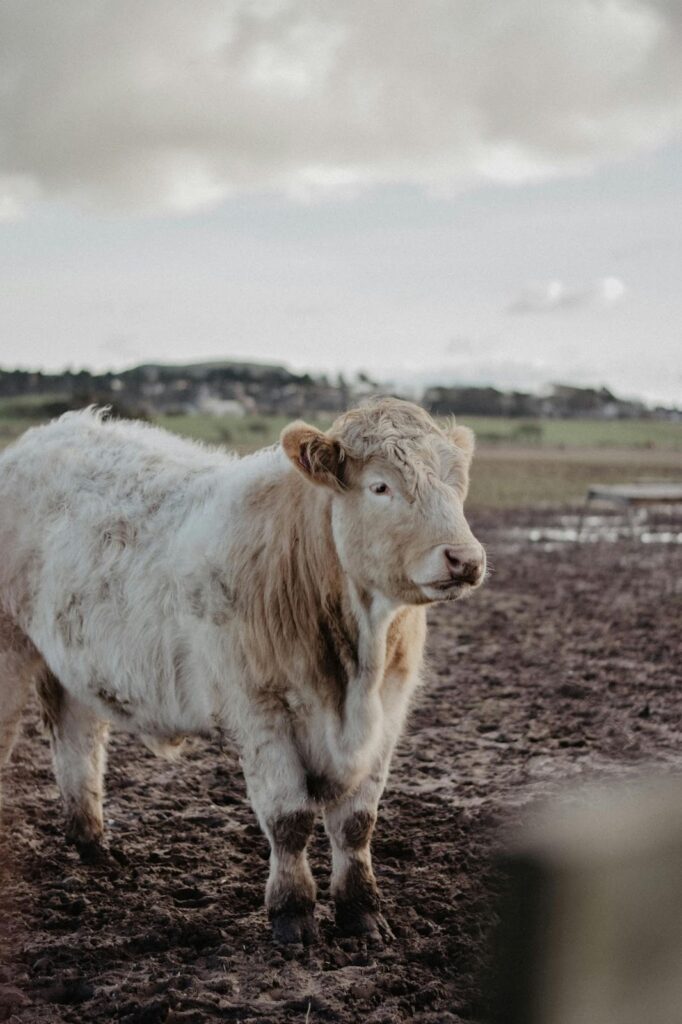
Another big problem experienced on feedlots is the presence of unacceptable levels of mud during wet weather. This is generally caused by wet weather followed by freeze/thaw cycles combined with the trampling animals.
Excessive mud is not only unpleasant for the cattle and those who tend to them; it can cause further issues such as foot rot and environmental concerns like excessive smells (once the weather gets warmer) and polluted water runoff.
Introducing solar panels above the cows prevents the sun from drying out the ground so much that it compacts (making it easier for mud to form). Additionally, shade helps keep cattle calmer, leading to less agitation, which helps prevent the formation of mud.
The solar panels can also prevent excess water from building up on the feedlot land. All it takes is installing a gutter system that directs the water to wherever you want it to go.
Environmentally, this is better as it stops the water from mixing with cow feces and polluting the local area.
Wet weather also adversely affects the quality of the grain fed to the cows. If it gets too wet, the growth of mold and fungal matter increases.
Consuming contaminated grain increases digestive and respiratory issues in cows and causes them to eat less, which then causes them to take longer to reach their target weight.
By placing the feeding troughs under the solar panels, you can keep the grain dry and help prevent this issue from happening.
Improved Pasture Lands

Since all calves spend their first six months on pasture land, placing solar panels in this area can also provide great benefits.
Pasture land is very susceptible to drought, especially as the impacts of climate change accelerate. While a dry season is preferable for rearing calves, big problems occur when things get too dry.
Grazing already hinders the grass’s ability to reproduce itself. However, with a lack of soil moisture, that ability becomes even more challenging. Hardened, dry soil acts like a solid surface, which creates water runoff instead of absorption.
With a shortfall of soil moisture, even when it does rain, the grass suffers significantly and dies off. When this happens, the diminished plant life on the land leads to poor soil quality.
By introducing solar panels to pasture land, you do the two-fold job of providing shade to the animals and creating a microclimate that is beneficial for soil moisture and preventing water runoff.
The unique microclimate generated under the panels reduces water evaporation and protects the ground from getting too hot.
These beneficial conditions allow pasture grass to thrive, providing young herds with all the nourishment they need for healthy (and happy) development.
How Solar Panels Are Good for Ranchers
Increased Revenue and Lower Operational Costs
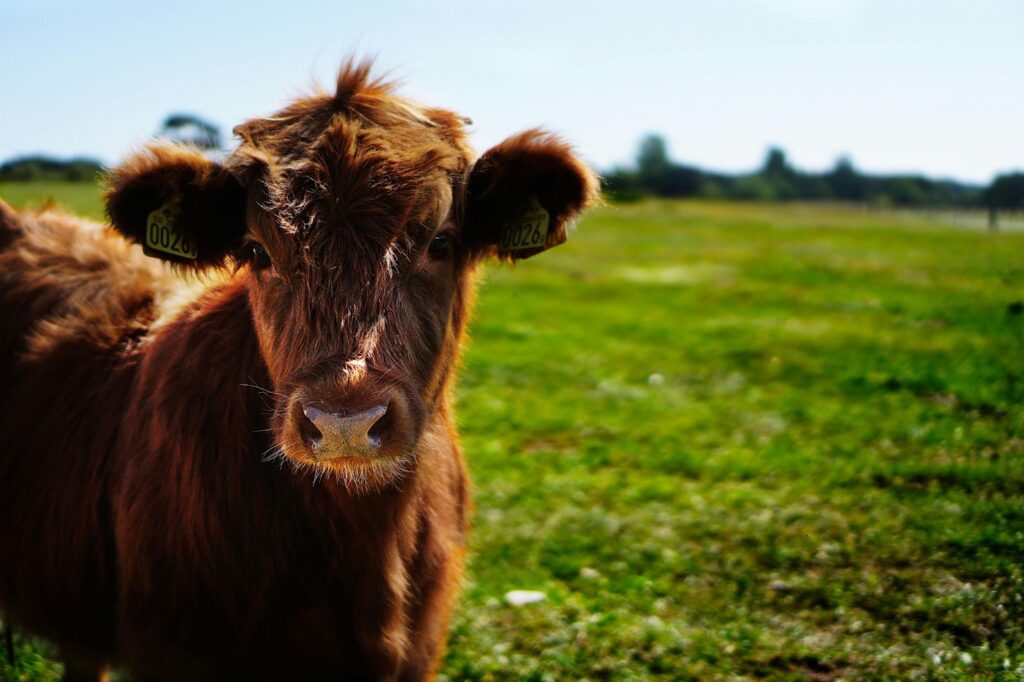
As we have already demonstrated, happy cows lead to higher profits. If you can increase the profit margin of each cow just by installing shade above them, then it’s a no-brainer.
Let’s take the earlier study where the implementation of shade led to an $18 profit per cow:
| No of cows | Additional profit |
| 1,000 | $18,000 |
| 5,000 | $90,000 |
| 20,000 | $360,000 |
| 50,000 | $900,000 |
It stands to reason that the larger the beef farm is, the harder it will be to provide shade for all cows, but providing shade for even a portion of the herd can yield significant increases.
Let’s not forget the other economic benefits, too. Introducing solar panels onto a feedlot can also mean:
- Less financial outlay for medical intervention because of healthier herds
- Higher fertility rates, meaning herd numbers can be easily maintained
- Lower amounts of mud, feces, and spoiled food to deal with
- Rainwater collection from panel runoff reduces paid water use
Then there’s the biggest advantage of all. While the solar panels are keeping your land and livestock happy, they are also providing free electricity to run the rest of your farm and reduce your overall operational costs, including:
- Water pumps
- Electric fencing
- Lighting, heating, and cooling in indoor spaces
- Grain drying and milling
Power Anaerobic Digesters
Anaerobic digesters are a great idea. They safely process cow dung and transform it into biogas, which is then used to generate electricity.
Plus, these digesters are the perfect solution for dealing with the many tonnes of dung that the larger cattle farms produce while preventing the additional release of methane when the dung begins to decompose.
There’s a problem, though.
These digesters cost a lot to run. According to one report, an anaerobic digester will cost a 2,000-strong cattle farm around $588,000 to power each year. This works out to be around $294 per cow.
Also according to the report, via the digester, each cow only generates around 22.5 MMBTU of gas per year, which is only worth about $68.
The key issue is that farmers aren’t paid enough per kWh of electricity they produce. One article states they are only awarded three cents per kWh. The math just doesn’t add up and it has left many farmers who invested in digesters with no option but to switch them off.
Solar energy can address this problem and make it financially viable for farmers to switch their digesters back on.
Solar panels (especially with the use of storage batteries) can cover most, if not all, of the digester’s power needs.
While farmers are unlikely to profit much from selling the electricity the digestor generates, solar will at least make it economically viable to run the digester and safely process the dung.
Secure Fencing

Fencing is required to keep the cattle from wandering too far, and often, the cheapest and most convenient method is to use electric fencing. However, like remote watering systems, electric fencing requires a power source.
Typically, batteries are used to power the fencing, but they require consistent checking and maintenance. On the other hand, solar-powered fencing requires very little interaction, and with the use of solar storage batteries, there will be enough power to operate the fencing round-the-clock.
Remote Water Accessibility

Particularly large beef farms can face challenges in providing water to all areas of pasture lands and feedlot enclosures.
To maintain an adequate supply of fresh water for the herds, it’s often necessary to implement water delivery systems, which typically involve the use of pumps. The pumps require a power supply, which can mean the use of expensive diesel-powered generators if the pumps are situated too far from the main electricity supply.
Solar panels can be used for dual purposes here. Not only can they provide the electricity required to power remotely-situated water pumps, but the rain that falls on the surface of the panels can be easily harvested and used for watering cattle.
By using guttering, the rainwater can be channeled into nearby storage tanks for later use. The additional positive impact here is that using collected rainwater means lower water bills overall.
Cheaper Energy Bills
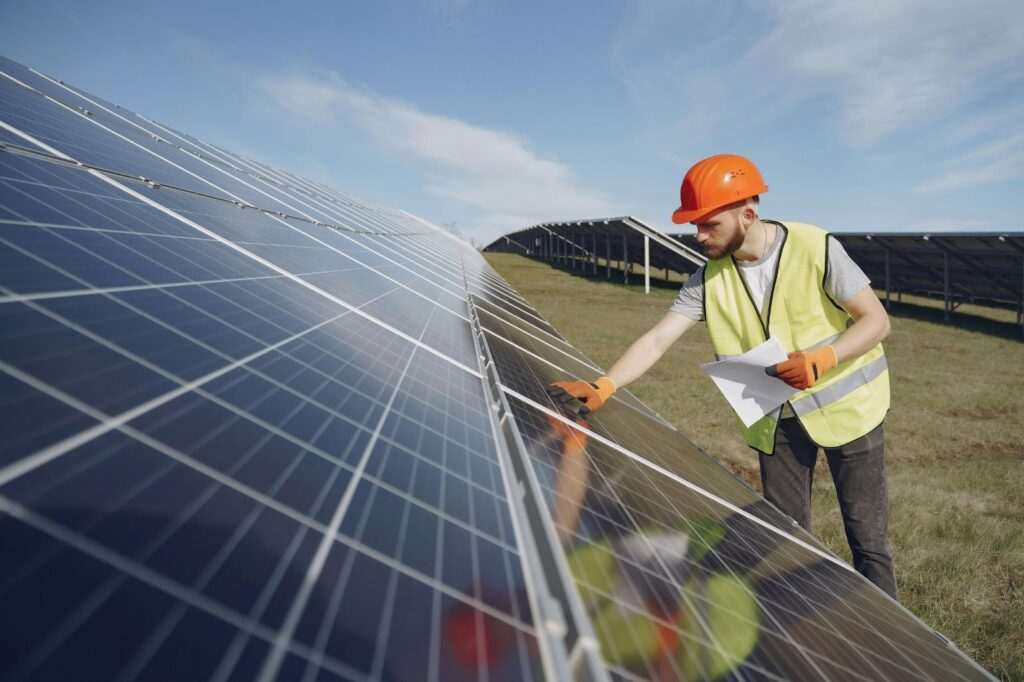
Beyond anaerobic digesters, you can offset much of your farm’s energy bill by sending your excess solar-generated energy to the grid for energy credits (net metering).
However, there are charges on your energy bill that you cannot eliminate with solar power (delivery, distribution, and demand charges, for example).
In the best cases, it’s possible to reduce energy bills by up to 96%, but the amount your bills will reduce depends on the unique circumstances and power requirements of your farm.
It’s possible to further reduce energy bills through solar storage batteries, although this increases the initial installation cost.
Resilient Power

For a farm, there’s nothing worse than experiencing a prolonged electricity blackout.
Backup generators can counteract this problem, but they are expensive and require ongoing maintenance and attention.
In contrast, solar panels require very little maintenance and provide a reliable, ongoing source of energy throughout the year. Even on cloudy days, a solar array can harvest plenty of energy to keep things running.
As the main grid’s infrastructure ages and becomes increasingly stressed, the number of blackouts is set to increase. Therefore, it has never been more important to implement a reliable and resilient supply of electricity.
Carbon Offsetting
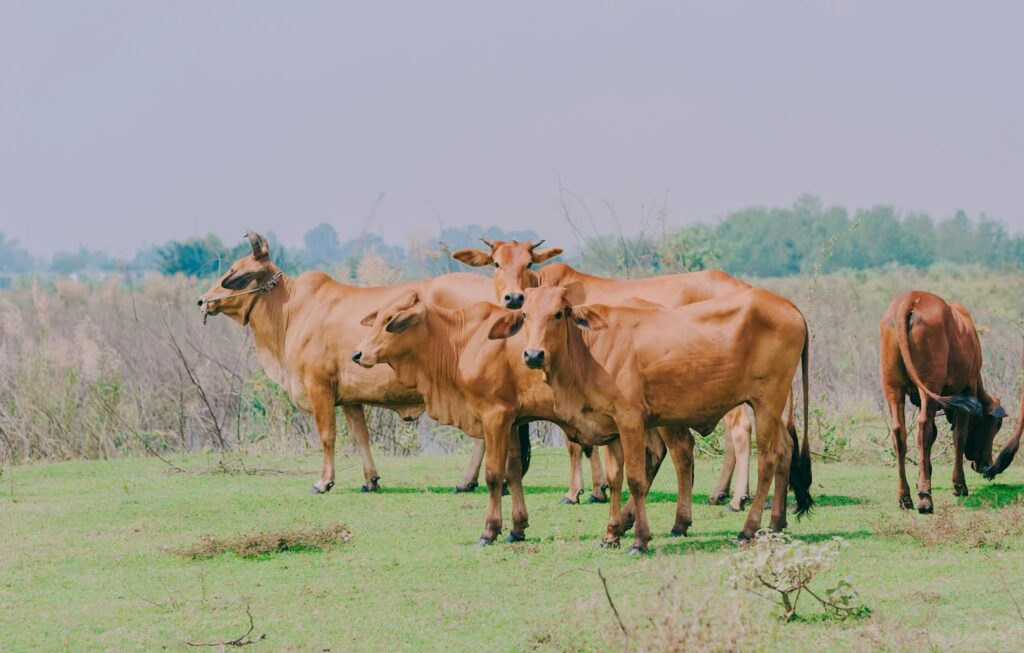
We all need to contribute toward a clean and sustainable energy future. But things are a little different for beef farms.
The lion’s share of the farm’s carbon emissions don’t come from the farm but from the cows themselves.
A single cow will typically create 220 lbs of methane each year. Multiply that by the number of cows on the farm, and you have a problem. Especially since methane is found to be 28 times more potent than CO2.
Solar energy alone won’t offset all of those emissions, but the shade generated can make a huge impact.
However, one study found that shaded Holstein heifers experienced lower body and skin temperatures, significantly reducing their overall methane production.
This reduction, combined with the reduction of emissions through the use of solar energy, was found to be enough to achieve net-zero methane emissions.
Potential Drawbacks of Solar Feedlots
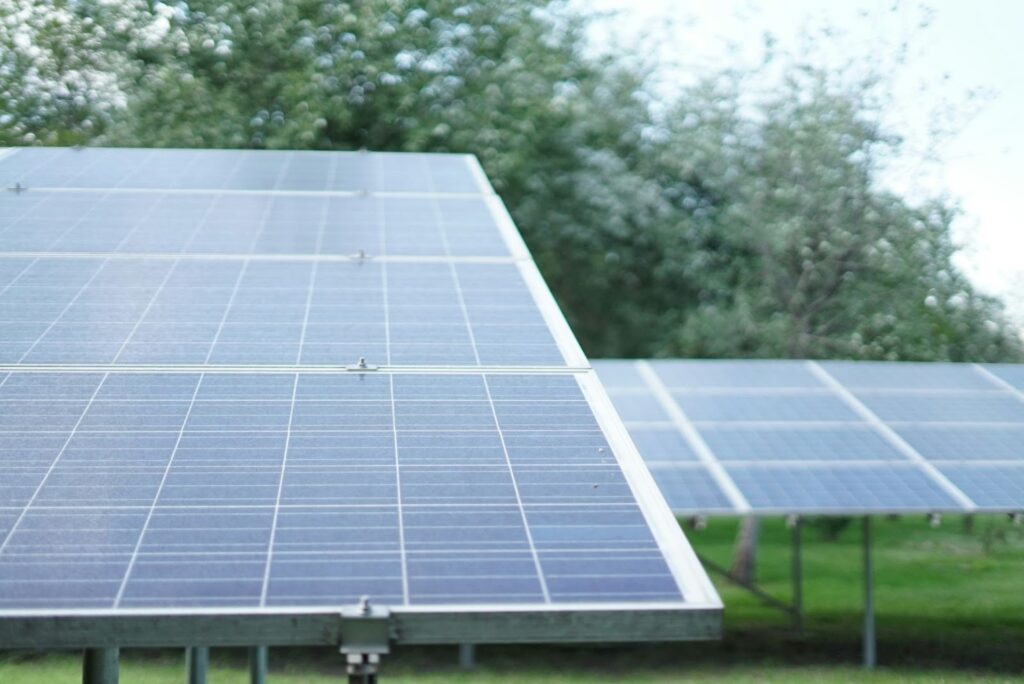
Although there are significant advantages to using solar panels as feedlot shading, there are also some drawbacks to consider.
Cows love a place where they can have a good scratch. Therefore, it’s essential to mount the solar panels so they cannot suffer damage if a cow rubs up against them.
The most common solution is to mount the solar panels high enough so the cows cannot reach them. The racking that supports the panels doesn’t present a problem since it’s made of steel and won’t be affected by a curious cow or two.
However, mounting solar panels higher results in higher installation costs, so it’s important to factor this into your initial calculations.
Another consideration is the size of the beef farm. Some support tens of thousands of cows, so it simply wouldn’t be feasible to provide solar panel shade to accommodate them all.
One solution here is to consider leasing your land to a solar developer. They rent the land from you and install their solar panels. This is usually done on a utility-scale with many thousands of solar panels, so it presents a viable option for the larger farms.
The downside to this, however, is that you have to convince the solar developer to spend more installing taller racking – something they may not be willing to accommodate.
Got Questions? 8760 Solar is Here!
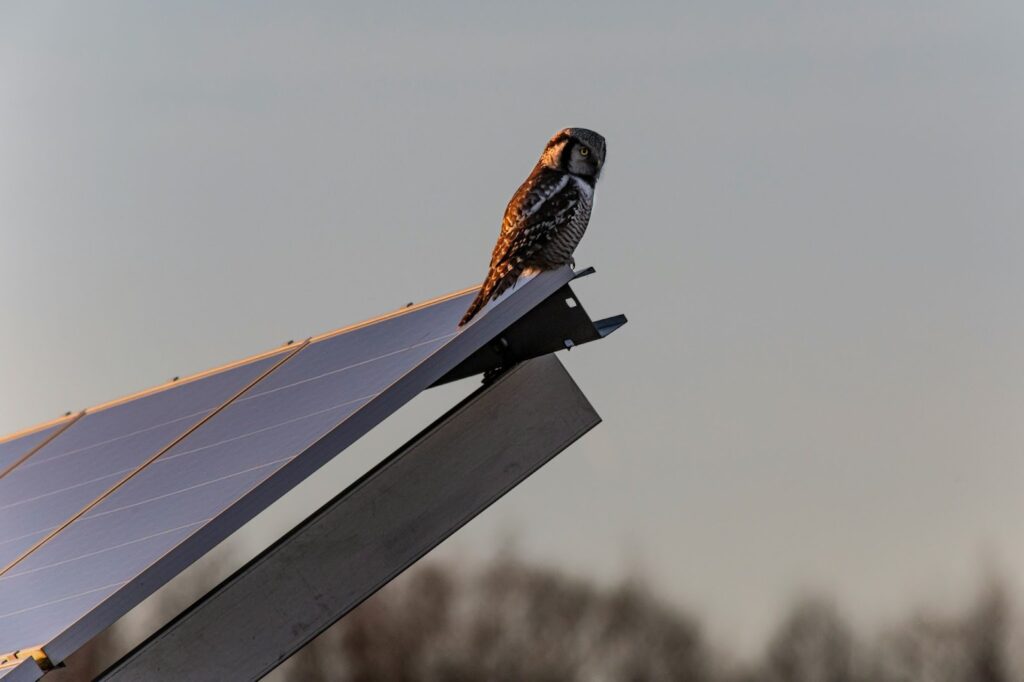
Solar energy is a winning option for farms of all sizes and types. Operational costs and energy bills aren’t going down anytime soon, so there has never been a better time to invest in renewable energy.
8760 Solar is your trusted solar installer for rural Colorado. We specialize in providing high-quality, custom solar installations to agricultural businesses in the state.
We start by conducting a thorough analysis of your farm, and then we will provide you with an accurate, no-obligation quote. We’ll even assist in taking advantage of the available grants and tax credits that make going solar even more affordable.
Text “READY” to 719 470-0254 or contact us via email at sales@8760solar.com and we’ll start you on your journey toward sustainable energy!
Frequently Asked Questions
How Can Solar Energy Help Farming?
Solar energy can help farming by providing a consistent and reliable power source and reduced energy bills. Agrivoltaics, the act of carrying out farming activities under solar panels, can provide farmland with a dual purpose – both agricultural and electricity production.
How Does Solar Energy Help the Animals?
Solar energy helps animals by providing essential shade during the hotter months. When animals suffer from heat stress, their health and fertility diminish. Therefore, using solar panels as a shading device can keep livestock happy and comfortable.
Why Do Farms Use Solar Panels?
Farms use solar panels to benefit from affordable, clean energy. Additionally, solar panels provide shade to protect livestock, and the microclimate generated underneath the solar panels helps retain soil moisture and health and promotes increased biodiversity.
Can Solar Farms Be Wildlife Friendly?
Solar farms are not particularly detrimental to wildlife. Measures such as installing fencing that allows the passage of animals and introducing native plantlife and pollinator-friendly plants can make a solar farm more wildlife-friendly.
